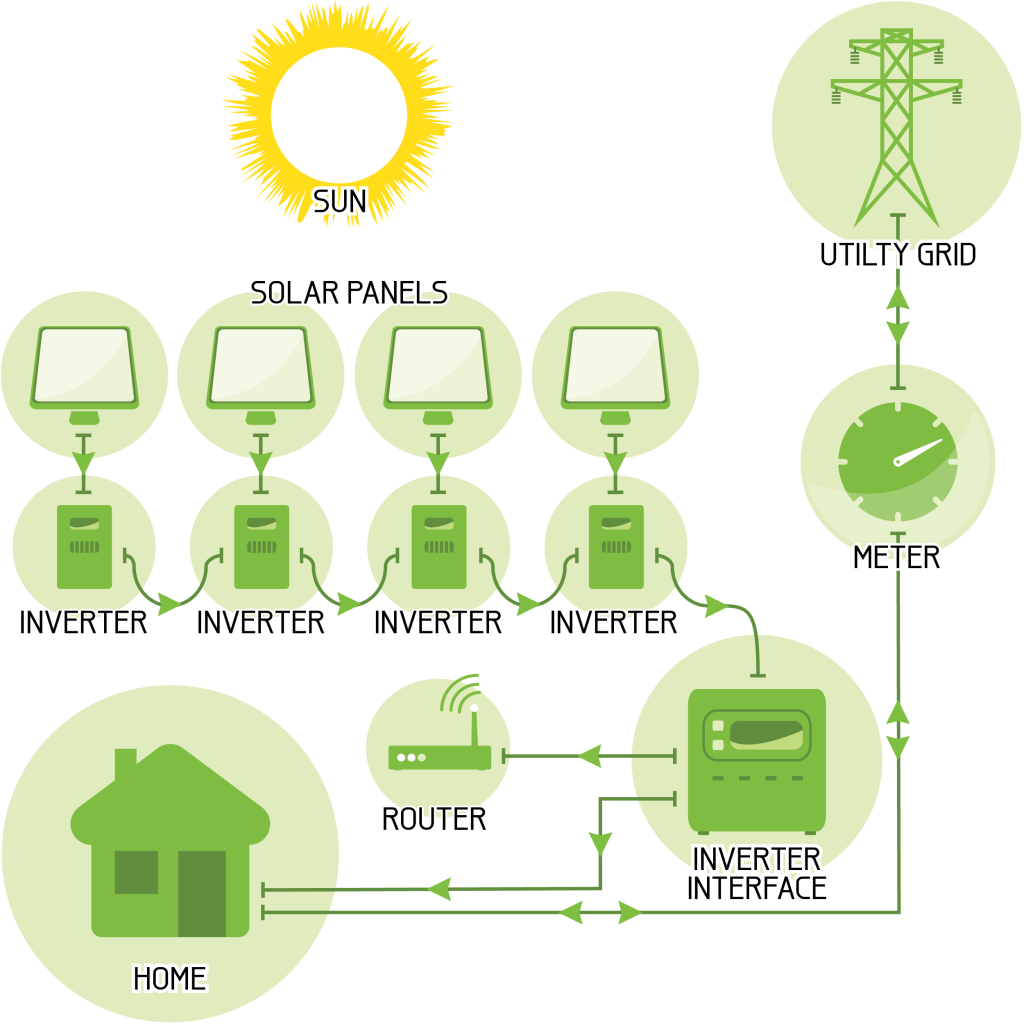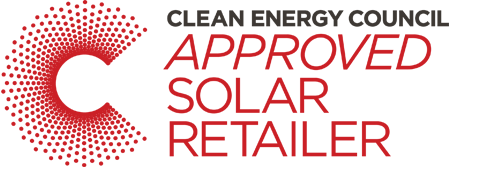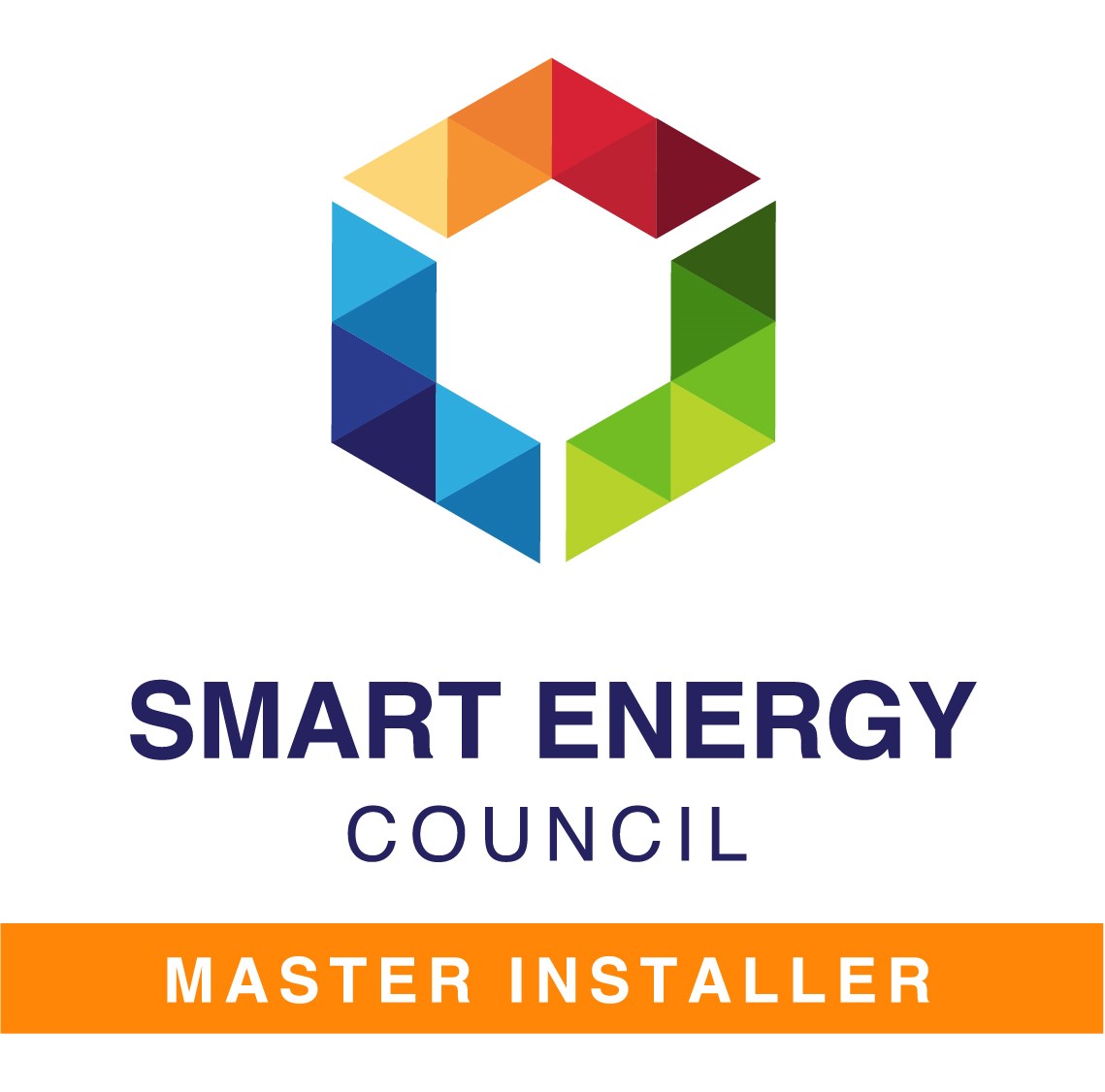Solar Power Grid Connect
Solar power helps you to gain control of your power consumption, reduce your power bills, and lowers the impact of your everyday living on the environment.
A solar system can be designed and installed to your home to produce enough electricity to power your lights, appliances, heating, cooling, and other household usage, tailored to your individual requirements.
How does solar power work?
Electricity is generated via photovoltaic (PV) solar panels fixed to the roof of your house or a separate framework (see the solar panel diagram below). When the sun hits these solar panels DC electricity is produced. This electricity is converted to AC via an inverter that is connected to your solar panels and your switchboard. When the sun goes down or on an extremely overcast day where there is not enough sunlight to produce the required amount of electricity, your house reverts to drawing power from the power grid. Solar panels in Tasmania provide a great way to reduce your annual power requirements.
When your Solar Power System is producing more electricity than is required it feeds the excess power back into the grid via an import/export power meter (see How does solar power feed into the grid?). This excess power is measured by the feed-in tariff (see Tasmania Solar Feed-In Tariff) and you receive 8.929c per kilowatt produced on this tariff, which is registered on your electricity bill as a credit.
Micro-Inverter Systems
An alternative to the more common string inverter system, is the micro-inverter system. The major difference is that each PV solar panel has its own micro-inverter located underneath it, then an AC cable connects all inverters together and into the household switchboard. The power then goes into the house and into the grid the same way a normal string inverter system does. Each panel can be monitored individually via a web-based gateway that shows system performance and data.
The key advantages of a micro-inverter system are:
- Performance – improved energy yield due to individual MP
- Simplcity – modularised with simple design and installation
- Savings – no additional DC wiring or switching requirements
- Safety – minimal risk of DC faults and potential arcing
- Reliable – longer life expediencies and warranties
- Intelligent – monitoring at individual panel level
How much money will you save? How much money will you save?
Solar Power in Tasmania will save you money. A correctly sized and designed PV system will provide electricity for your home without exporting too much to the grid. As the feed-in tariff has been reduced over the years, it is more economical to focus on producing the right amount of power for your energy consumption, always reducing the amount of power required from the grid.
You can dictate how much you save by running household items like a load of washing, the dishwasher, using the oven, or vacuuming the house during the day while the sun is out, rather than on an overcast day or at night when your solar panels are producing limited energy. Therefore the more renewable energy you use during the day, the more you will save.
The Clean Energy Council has published a free, downloadable guide to buying solar PV that you can view here.

















